Stinging Nettle
Uritica Dioica
[Native North American Species Urtica Gracilis]
There is also Laportia Canadensis
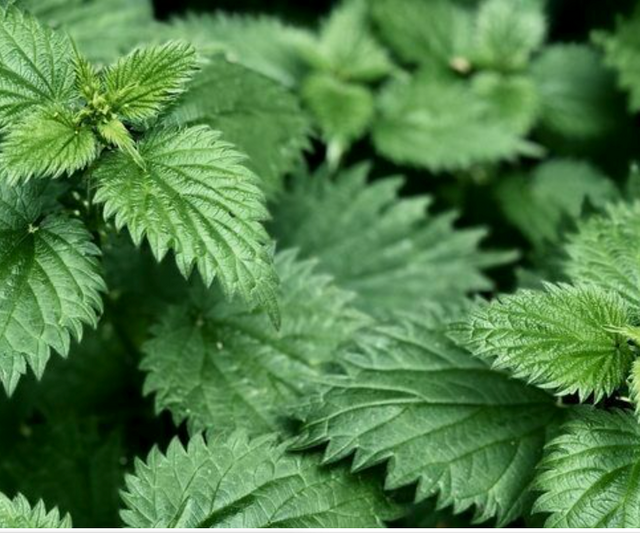
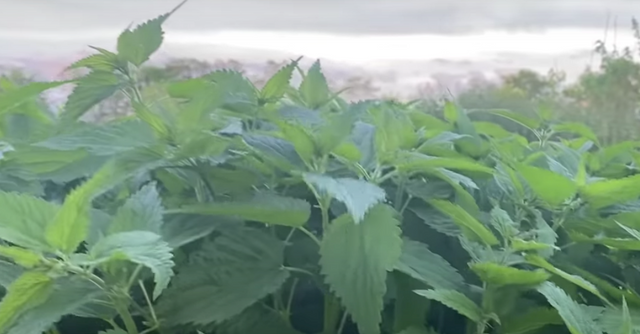
Grows in the wild and is easy to cultivate if you want to incorporate into your garden.
Will even grow in full shade and under black walnuts.
Make
pestos
dried green powders
Steamed or sauteed.
Any heat will deactivate the stinging hairs and make it edible.
If you look closely you can see the nettles and that is what gets you so just be careful.
Stinging Nettle is very nutritious and delicious so don't let this deter you.
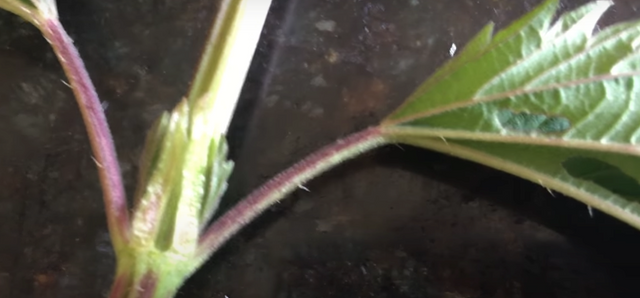
You may find stinging nettle in forests and near water, river's edge, etc.
When going to harvest be sure to protect yourself with long sleeves, pants and gloves to protect yourself as
Stinging nettles are covered with countless tiny hollow hairs called trichomes. When something brushes against these hairs, their very fragile silica tips break off, and the remainder of the hair can then act like a needle. It pierces the skin, and releases a cocktail of various chemicals from the base of the hair, and it’s these that cause the sting.
Cut above a set of leaves which have the potential to bring out a new shoot which can provide twice as much stinging nettle later.
Best time to harvest is generally through late May and early to mid June. The leaves are usually bug free then with tender leaves. As the stinging nettle matures the leaves get tougher sort of like with mint. You will see a similarity in the look, arrangement of stinging nettle to mint.
Cooking Stinging Nettle
Some people cook with the stem, they are a little tough so if you just want the leaves you can cut or tear those off.
Fill your bowl of leaves with water, stir them and soak for about 5 min.
Then stir again and pour through a strainer.
To saute, heat up a cast iron skillet or frying pan.
Add Olive oil
Add your nettles
then season with a little Himalayan salt and fresh ground pepper
stir to coat with olive oil
cook until all the leaves are soft about 4 or 5 min.
then plate and enjoy!
You definitely want to harvest before it sets seeds and has the lovely lighter green color to it's leaves.
Stinging nettle soup
1 1/2 quarts water to boil
cook 4oz butter in frying pan until it's done making noise then add chopped onions 3 medium sized.
Chop up rinsed nettle leaves
Put them into the browned onions
Stir while cooking for about 5 or 10 minutes then shake on 1/4 cup of flour
with a little salt and pepper.
Now add all to boiling water
If you have some stale bread crust you can chop this up and add to the soup.
Let simmer for about 10 min.
Chickweed
Stelaria Media
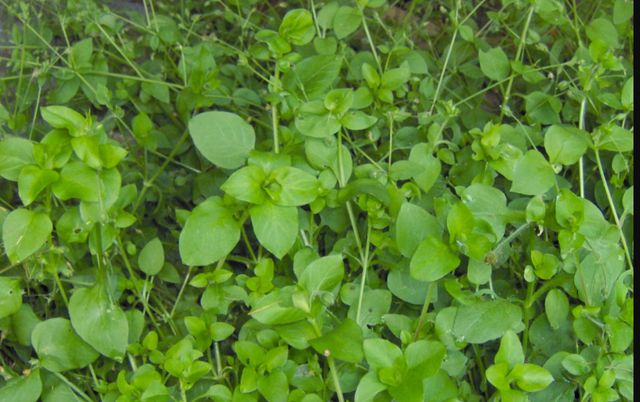
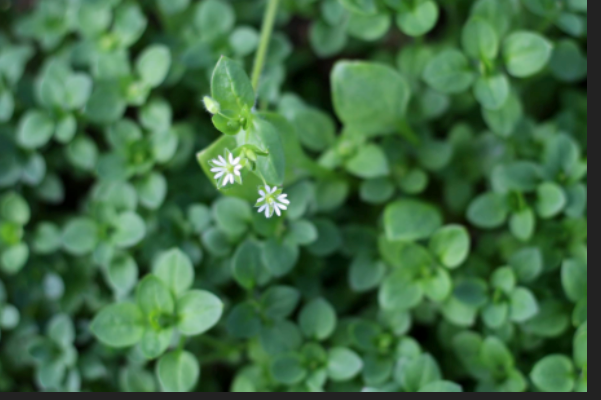
How it looks when it flowers
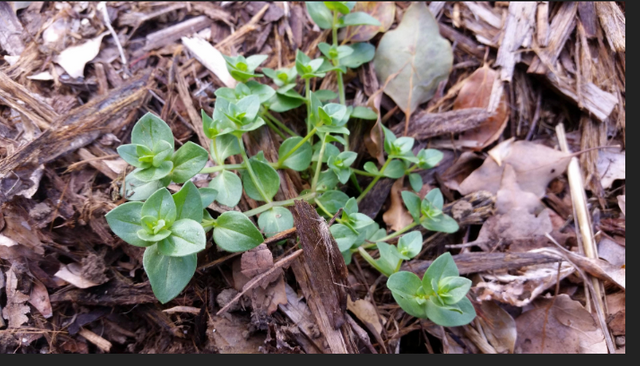
You can cook it
Make a pesto
dry into powders
Chickweed is not a weed (at least to me). Chickweed’s a beautiful, petite green with a crisp texture and mild, sweet flavor reminiscent of corn silk that adds elegance to any plate it touches.
It’s Nature’s forageable microgreen,
The chickweed grows lower to the ground, and the lower to the ground the better it tastes, since it’s younger.
By mowing down the chickweed when you mow the lawn, you invigorate it’s growth and force it back to the earlier stage of growth that’s the best for eating. Like just about everything else, young and tender is the way to go with chickweed, as it gets older it can get stringy and tough.
In areas where chickweed can form a good colony, it will produce dense, thick mats of fluffy, juicy leaves you can harvest quickly.
You can use plastic ziploc bags with a slightly damp cloth or towel inside, which works good too. Store your greens at home however you like, but try refreshing whatever you pick in water before you refrigerate it, it restores life to any greens, not just chickweed.
Use them in a vegetable bow, rice bowl, soups even top your eggs with them. However you like!
Lambsquarters
Chenopodium album
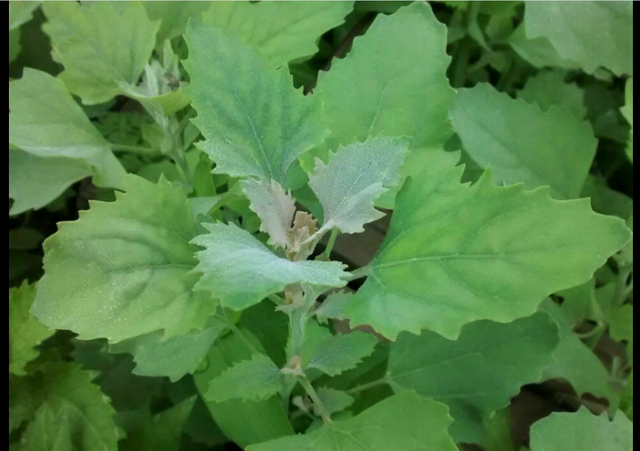

Chenopodium album is extensively cultivated and consumed in Northern India as a food crop known as bathua.
It's one of the most nutritious plants on earth.
It's one of the highest wild greens in oxalic acid.
It's good steamed, boiled, pan fried which helps to cook out and denature the oxalates.
It's packed with flavor.
Dandelions
Taraxacum officinale
2nd highest source of boron of the wild greens.
Boron helps to detoxify the body of fluoride.
Many of us eat the leaves in salad after gathering in unsprayed places and washing.
The leaves can also be boiled to remove some of the bitterness.
You can make a vinegar for salad or an immunity booster with 2 parts oil and 1 part apple cider vinegar.
You can also make a tea even using the flowers of the dandelion which are also edible.
Some say the blossoms are the sweetest.
Check this out for some ideas from Clara.
Great Depression Cooking - Dandelion Salad
Garlic Mustard
Alliaria petiolata

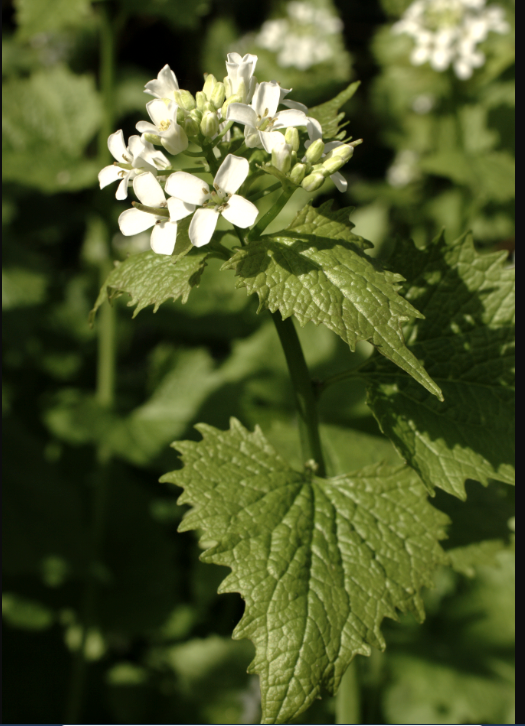
It's a European import that is very weedy and prolific.
Known to be Allelopathic, so it does compete against other plants in the area.
Highly nutritious.
190 milligrams of Vitamin C per 100 gram serving.
Great to use for pesto
cooked green
saute
boil when older to take some of the bitterness out.
Basswood
A native tree in the mallow family.
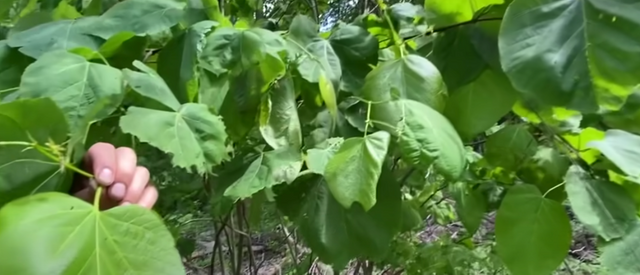
Very mild with a nice flavor so it can be the base for a salad.
Delicious raw
in powders
Sauteed
Steamed
It can help keep people hydrated.
Can be made into a tea which is helpful for sore throats.
Mulberry Leaves
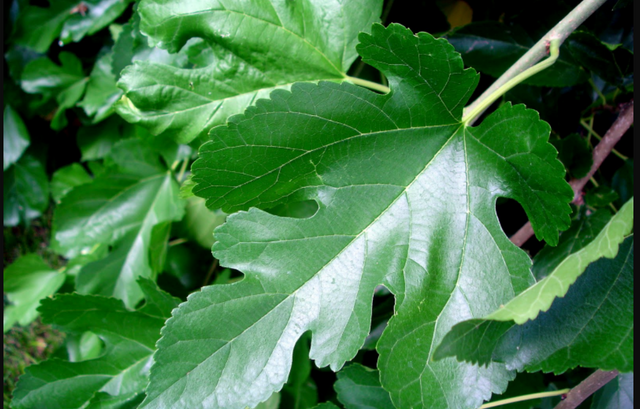
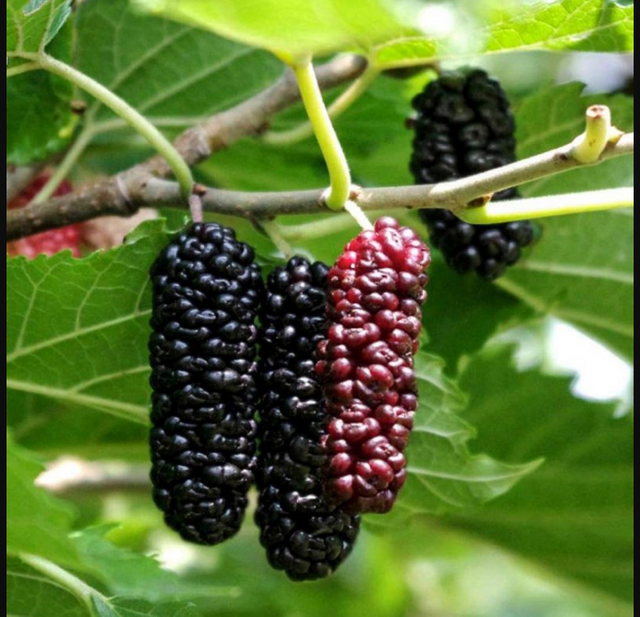
Mulberry Tea Leaves
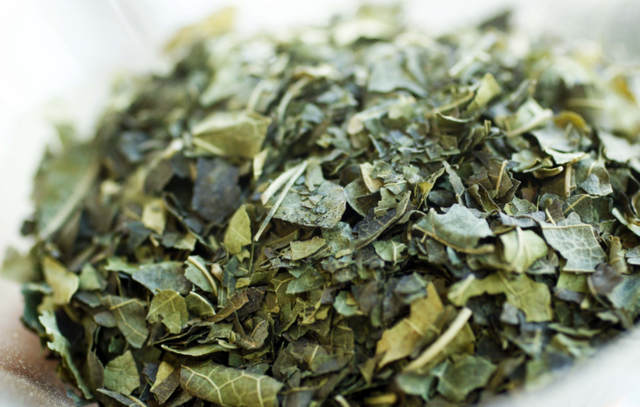
Great for powders and cooked greens.
Purslane
Portulaca oleracea
A succulent.
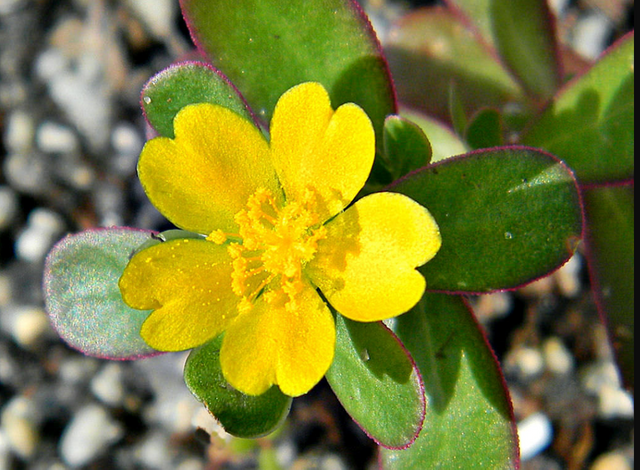
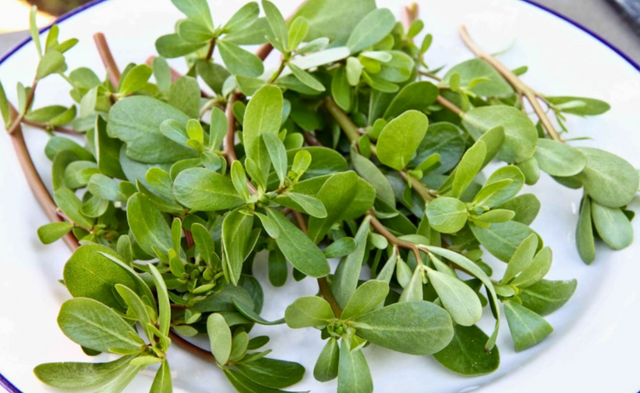
Purslane Could Be An Excellent Choice In Fight Against Cancer
http://alkalinevalleyfoods.com/purslane-could-be-an-excellent-choice-in-fight-against-cancer/
Add raw to salads
use as a cooking green
Some add to smoothies
Coats throat
High Omega 3 fat content
High in Oxalic acid so many prefer to cook it.
Milkweed
Asclepias syriaca
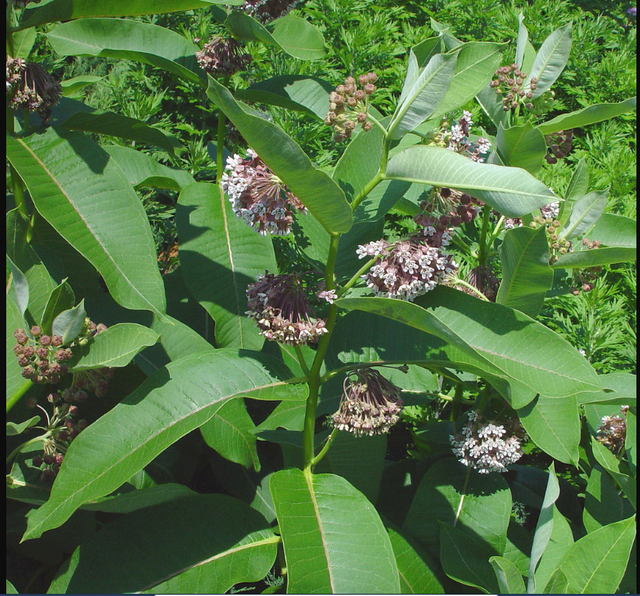
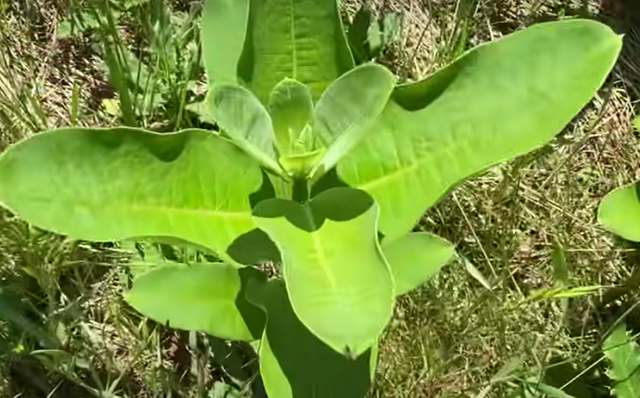
Grows in many open fields all over.
It is very important to boil it twice as it has cardiac glycosides that are toxic.
The solution is to boil in 2 changes of water.
Be aware that it looks very similar to dogbane which is poisonous.
Common milkweed has a hairy stem, unlike dogbane. When mature, the dogbane stem branches in the upper portion of the plant. The flowers also look quite different. Common milkweed flowers are pinkish, large and ball shaped, whereas dogbane flowers are whitish green and in small clusters.
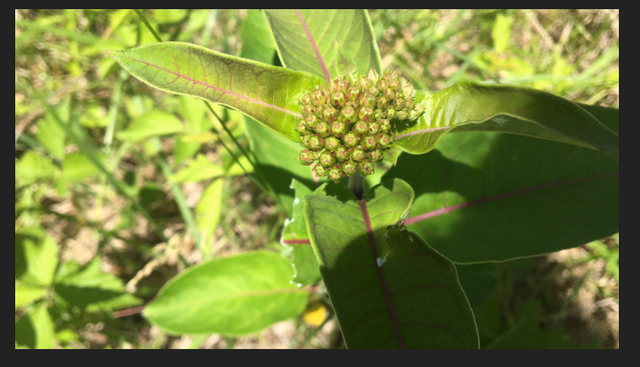
Distinguishing Dogbane from Milkweed | PubWages
http://www.pubwages.com/56/distinguishing-dogbane-from-milkweed
Be careful as they grow in the same habitat.
To be certain pick off a stem.
Inside of Milkweed is hollow
Inside of Dogbane is solid.
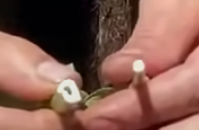
Bidens
The weed of this week is Spanish Needles (Bidens spp.). In Florida, there are Eight species of Bidens present. They are all commonly referred to as Spanish needles or beggar-ticks. Bidens alba and Bidens Pilosa are two of the common Bidens spp. found in container nurseries and landscapes in Florida.
Instead of a pappus of fine hairs to carry seeds on the wind, these have seeds with hooked barbs that stick to fur or clothing. Another characteristic of Bidens is the circle of leafy bracts (outer phyllaries) around the flower head.
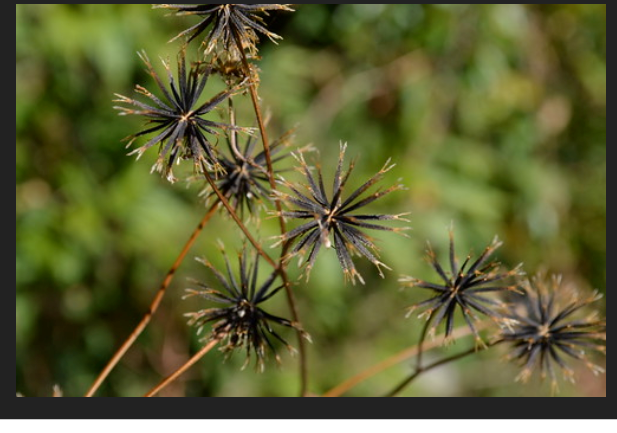
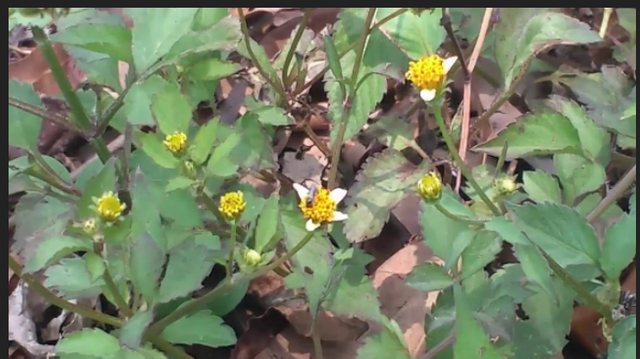
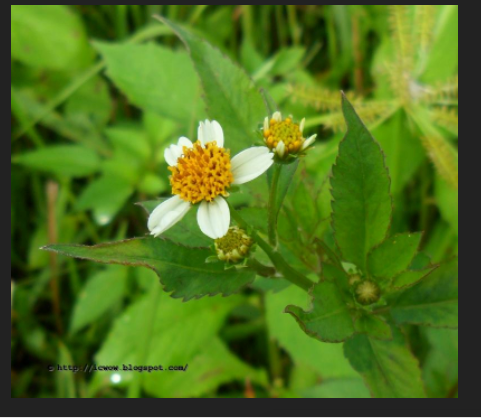
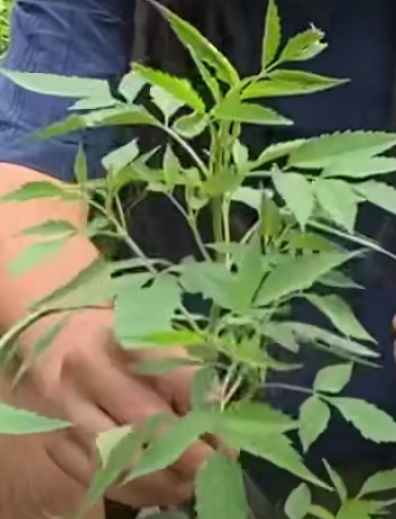
All species are edible that many have come across.
Aster family so there can be bitterness raw, boiling or steaming it is the solution before using it for pesto.
A great cooking green loaded with nutrition.
Medicinal as it is a gentle, but effective antibiotic.
Spanish Needles and Beggar's Ticks are a reference to the seed which makes them easy to identify.
You will see them all over the place once you start looking.
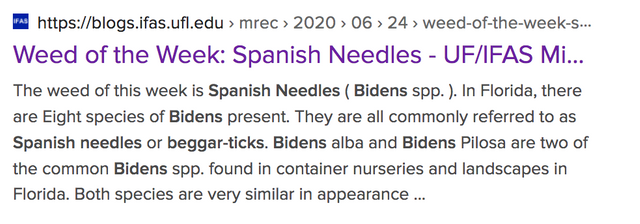
https://blogs.ifas.ufl.edu/mrec/2020/06/24/weed-of-the-week-spanish-needles/

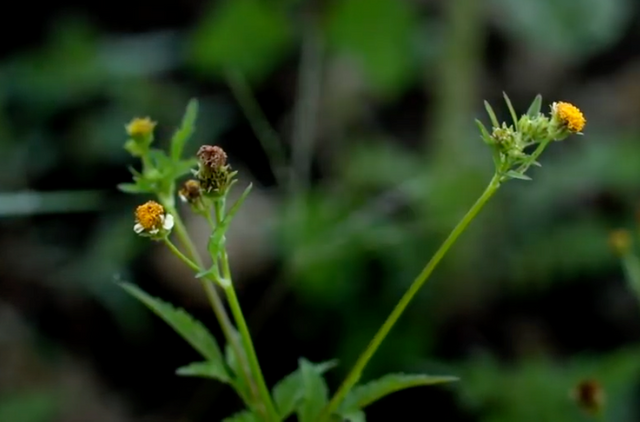
They have a loosely squared stem that are sometimes hairy!
The leaves come out in an opposite manner and are compound, so one leaf, then leaflets. There is always an odd number of leaflets.
Typically between 3 and 5.
The terminal leaf is larger than the others.
The leaf margin is toothed.
The flowers help determine which species of Spanish Needles it is.
The flowers and leaves are edible.
As with many other greens, the younger are delicious raw, older are better cooked.
Spanish Needles treat over 40 different diseases one being diabetes.
Also used to make kefir for those who wish.
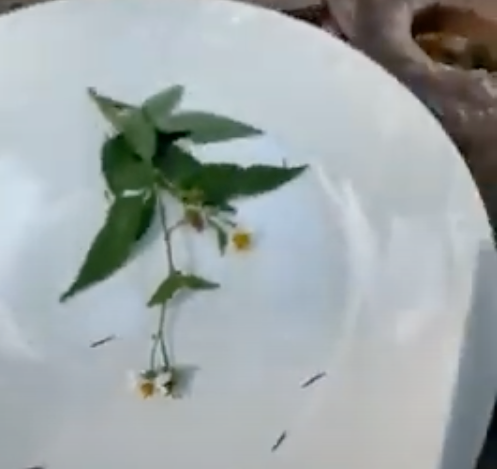
From
Herbal Antibiotics: Natural Alternatives for Treating Drug-Resistant Bacteria Paperback – July 1, 2012
by
Stephen Harrod Buhner
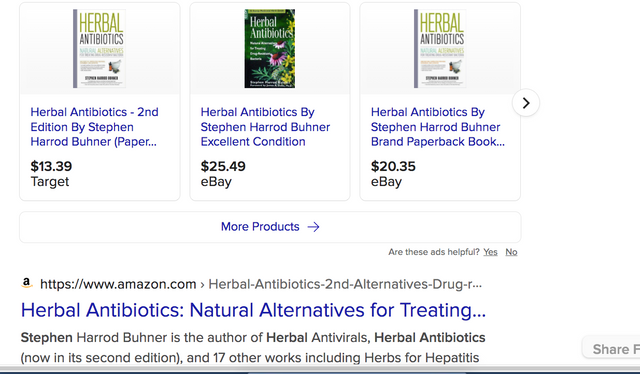
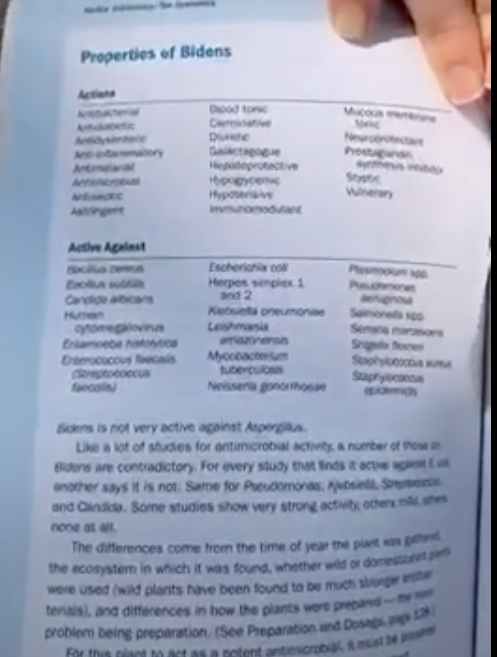
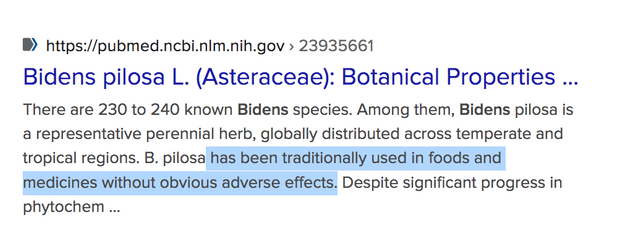
Even they had to admit some...
https://www.ncbi.nlm.nih.gov/pmc/articles/PMC3712223/
https://earthmedicineinstitute.com/more/library/medicinal-plants/bidens-pilosa/
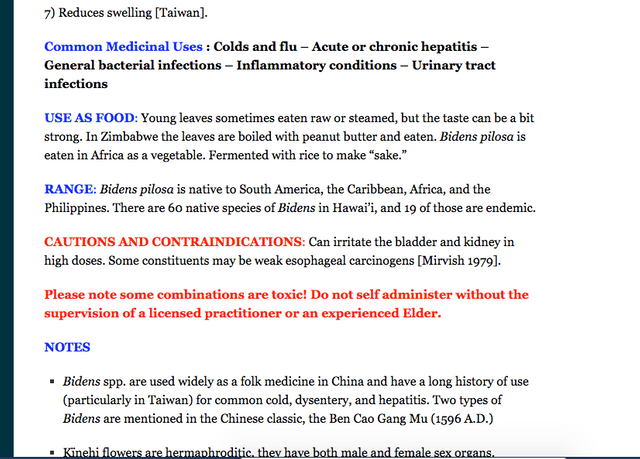

https://joybileefarm.com/bidens/
Considered a broad spectrum antibacterial.
It is also part of protocols for lyme disease, co infections.
For this type of protocol use a fresh tincture or a leaf juice.
You can do a cold infusion [just room temp water] and let it steep for up to 6 hours
after filling jar almost all the way up even with the flowers if you wish and put the lid on it. Can even put into the fridge.
For a tincture, bring it in, let it wilt a little, be sure all bug friends are off of it by rinsing, then damp dry between paper towels and let hang a while but don't allow to dry too long.
Muddle [can use a mortar and pistil but can just break open the plant cells to access what's inside]. You want the healthiest and most nourishment from the plant.
No pulverizing as in pesto, just pushing and breaking up the cell walls for the tincture.
Sometimes even just rubbing the plant leaves and stems between your hands is enough muddling.
Add plenty of plant material to a small jar and even push down what you have muddled for the tincture.
Most tinctures are fine with 80 proof alcohol which would be 40% alcohol.
For the proof you take half for your percentage of the alcohol in whatever the alcohol is.
Biden's need a higher level of alcohol to access the constituents you're going for.
Did I say there is a Bidens Pilosa species.